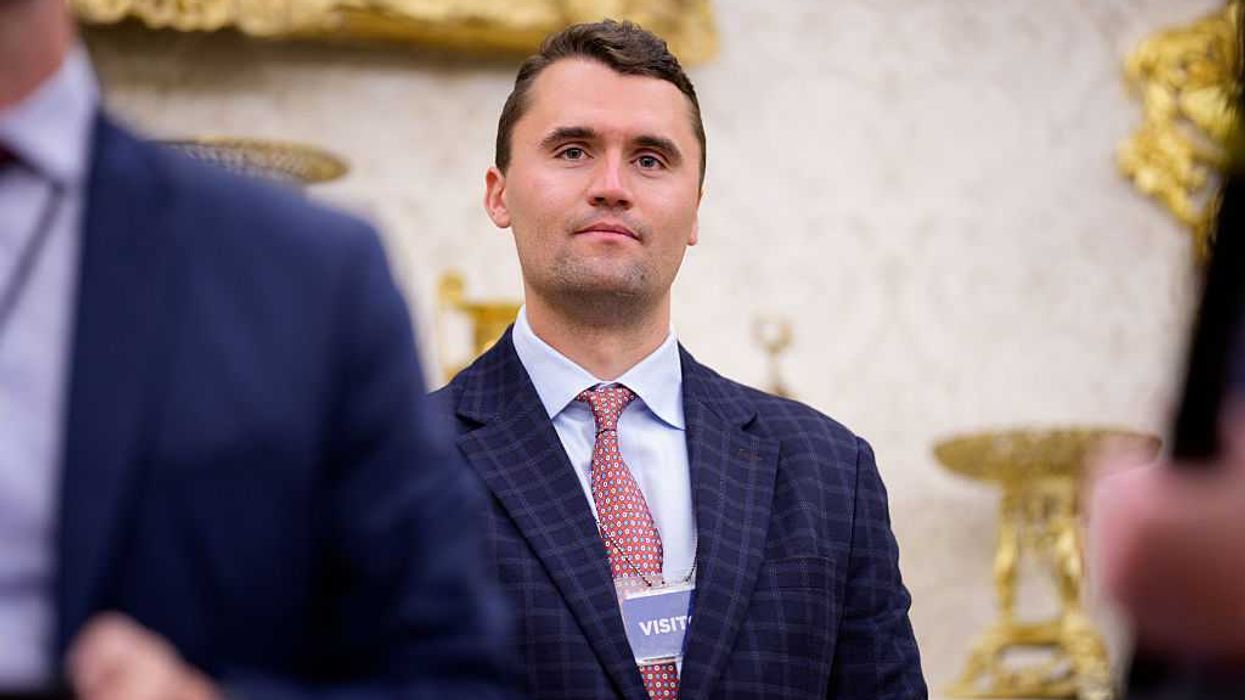It’s no secret that Glenn is not a fan of politicians, and he speaks to all of them with great skepticism. But on radio this morning, he spoke with a Senate candidate from North Carolina, Dr. Greg Brannon, and he was pleasantly surprised by what he heard. In fact, Glenn went so far as call Brannon “perhaps the best candidate [he has] ever talked to the first time out of the chute.”
“So we have decided that we wanted to be able to highlight some of the candidates around the country that are really truly winnable. And beyond winnable, they are candidates that are cut from the cloth of Ted Cruz, Ran Paul, or Mike Lee,” Glenn said. “I have not met this man, but… Matt Kibbe has compared him to Ted Cruz and Rand and Mike. He's running for Senate against the Democrat Kay Hagan in North Carolina. His name is Greg Brannon.”
Brannon is a father of seven, practicing OBGYN, and longtime listener of the program, who openly discussed what led him to run for Senate and what he believes to be the biggest issues facing the nation. To begin, Glenn asked him why he chose to enter the political fray.
“Well first off, I believe it's a service not politics. I'm 53. Our generation is going to pass on a less free America, unless we stand. And I'm not going to look at my children’s face and the
9,000 babies I delivered 15 years from now and they say: Where were in the fight for liberty. This is 1770 all over again,” Brannon said. “Mike Lee, Ted Cruz, Rand Paul – that's our future of our country. It's going back to our foundational core beliefs and who we are. And I'm not going to sit here on the sidelines.”
One of the things about Brannon that most impressed Glenn was how well read he is. Brannon chose to read H.R. 2590 (aka Obamacare) in its entirety because he believes “in knowing how things work and why.” He also explained how effected he was by a letter between Thomas Jefferson and his nephew that Glenn has referred to.
“Jefferson wrote to his nephew: Challenge everything. And we have to challenge this idea of who we really are,” Brannon said. “And let me to ask myself two questions: Who is sovereign, and what is the role of government. And both those are answered the second paragraph of Jefferson’s declaration… I'm just pumped to be out here. We have to make this Constitution what it means – that's what Washington challenged us.”
With the Republican Party in such disarray, Glenn asked Brannon how he plans to combat it should he make it to Washington.
“The Whigs, the Federalists, they messed up. They lost the actual true beliefs of who we were, and they went away. I believe what Ronald Reagan said when he was asked, Why did you leave the Democratic Party. He said, ‘No, they left me.’ I'm in the same position,” Brannon said. “I believe the party is Reagan and Goldwater and Taft and Coolidge. The Boehners and McConnells are... exposing who they are, which is great because the true rank and file Republicans and conservative Democrats are liberty loving constitutionalists. They are looking for men and woman who will honor their oath and Article VI. We have do that, the paradigm shift happens.”
“So I'm optimistic in this because I've seen it,” he continued. “We've traveled about 88,000 miles around the State. I'm still on call every day. I deliver 20 babies a month. And I'm just being that servant citizen… Glenn, you don't know what you've done by encouraging me to read, to challenge the status quo. Those kinds of things have empowered.”
After sharing his thoughts on immigration reform and answering the dreaded "how is your soul" question, Glenn had nothing but praise for the Republican candidate.
“I will tell you Greg… besides Rand Paul, I don't think I've ever talked to a candidate that has quoted more or listened to the show or read the show more than you have. And I appreciate that,” Glenn concluded. “I've talked to a lot of politicians. I've talked to a lot of candidates. And it usually takes me a while to warm up to them before I trust them. You are so well read. You are so well thought out. I believe you. You are perhaps the best candidate I have ever talked to the first time out of the chute.”
Brannon is currently in a primary battle against the GOP establishment-backed North Carolina House Speaker Thom Tillis, and he could use your support. To learn more about Brannon's campaign, click HERE.
Watch the entire interview below:

 Andrew Harnik / Staff | Getty Images
Andrew Harnik / Staff | Getty Images
 Hesham Elsherif / Stringer | Getty Images
Hesham Elsherif / Stringer | Getty Images Julia Beverly / Contributor | Getty Images
Julia Beverly / Contributor | Getty Images PEDRO MATTEY / Contributor | Getty Images
PEDRO MATTEY / Contributor | Getty Images